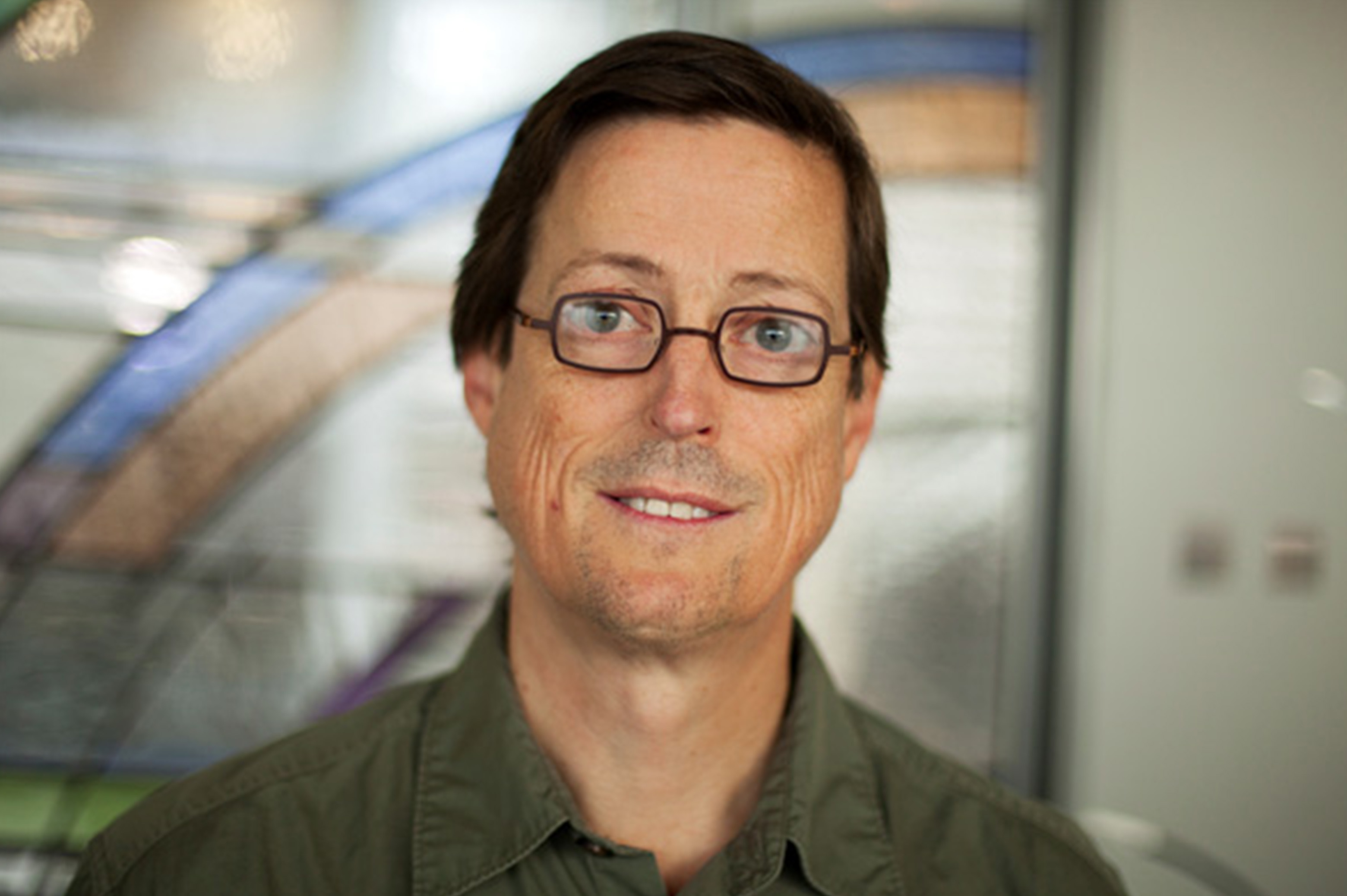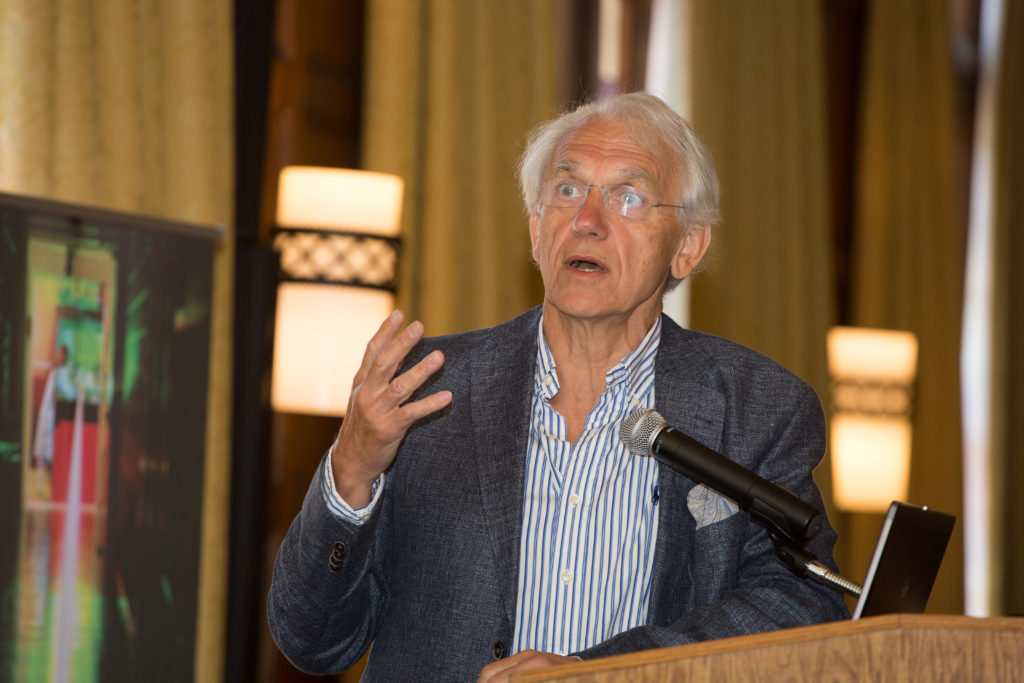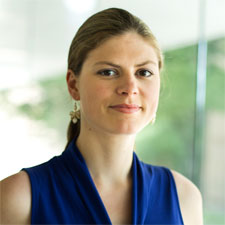February 4, 2020

Research Scientist John Nees is honored for his excellence in research and scholarship, as well as his distinguished career as a key member of the Center for Ultrafast Optical Science.
September 18, 2019
ZEUS – the most powerful laser in the US
The United States is upgrading its laser capabilities with ZEUS, a new three-petawatt system to be built in the Gérard Mourou Center for Ultrafast Optical Science at the University of Michigan. Three petawatts (PW) is equal to three quadrillion watts, or a 3 followed by 15 zeros.
Funded with $16 million from the National Science Foundation, the facility will enable both basic and applied research and will be a “user facility,” providing access to extreme laser intensities to scientists and engineers across the country.
October 2, 2018
The Nobel Prize in Physics 2018 was awarded “for groundbreaking inventions in the field of laser physics” with one half to Arthur Ashkin “for the optical tweezers and their application to biological systems”, the other half jointly to Gérard Mourou and Donna Strickland “for their method of generating high-intensity, ultra-short optical pulses.”

Prof. Gérard Mourou is A.D. Moore Professor Emeritus at the University of Michigan and was a founding Director of the Center for Ultrafast Optical Science. Currently he is a co-Director of the new center IZEST (International Center for Zettt-Exawatt Science and Technology) at the Ecole Polytechnique. Professor Mourou is recognized worldwide for his work in ultrafast science and technology. He has made major contributions, covering the field of electronics, optoelectronics, archeology and medicine. In ophthalmology, his work on the cornea resulted in IntraLASIK technology, marketed by IntraLase used on more than 5 million patients. He is a co-inventor of the Chirped Pulses Amplification (CPA) technique which has allowed for amplification of an ultrashort laser pulses to very high optical powers (presently several Petawatts) with the laser pulse being stretched out temporally prior to amplification. He has been the recipient of the Wood Prize from the Optical Society of America, the Edgerton Prize from the SPIE, the Sarnoff Prize from the IEEE, the 2004 IEEE/LEOS Quantum Electronics Award, the 2005 Willis E. Lamb Award for Laser Science and Quantum Optics and the Charles Hard Townes Award by the OSA (2009)б the Frederic Ives Medal / Jarus W. Quinn Prize by the OSA (2016), and the Arthur L. Schawlow Prize in Laser Science by the American Physical Society (2018). He is a fellow of the Optical Society of America and a fellow of the Institute of Electrical and Electronics Engineers. Professor Mourou is a member of the National Academy of Engineering and is also a foreign member of the Russian Academy of Sciences, Austrian and Lombardy. He was awarded a National Legion of Honor of France.
March 6, 2018
Louise Willingale Receives NSF CAREER Award to Advance Scientific Knowledge of Plasmas

Prof. Louise Willingale, assistant professor in Electrical and Computer Engineering, was awarded an NSF CAREER award for her research project “Relativistic Electron Driven Magnetic Reconnection.”
Magnetic reconnection is a fundamental process in which magnetic energy in plasmas is converted to heat and kinetic energy, while causing intense particle acceleration, sometimes to nearly the speed of light. It occurs during high-energy-density phenomena such as solar flares and auroras.
Magnetic reconnection typically occurs in space, making it difficult to study. Willingale plans to conduct high-energy-density laboratory experiments at the University of Michigan T-cubed laser facility and with the HERCULES laser (currently undergoing an upgrade), both housed in the Center for Ultrafast Optical Science, to shed light onto this little understood process and test the accuracy of existing theories. The T-cubed and HERCULES lasers have already led to the discoveries of many high-field science effects.
Doubling the power of the world’s most intense laser
Michigan News report on Oct 16, 2017 by Katherine McAlpine ([email protected])
The HERCULES laser holds the Guinness World Records certificate for highest intensity focused laser, and it is about to get more powerful and intense with a $2M upgrade from the National Science Foundation. Image credit: Joseph Xu, Michigan Engineering.
ANN ARBOR—The most intense laser in the world is about to get a power upgrade with $2 million from the National Science Foundation.
With more laser energy to focus, researchers at the University of Michigan and collaborators from around the world can make better tabletop devices that produce particle and X-ray beams for medical and national security applications—and also explore mysteries in astrophysics and the quantum realm.
The power of the HERCULES laser comes from a series of five embedded “pump” lasers that amplify ultrashort pulses of light. To upgrade the power of HERCULES from 300 trillion watts, or terawatts (TW), to 500 or even 1,000 TW, the researchers will replace the final three of those pump lasers.
If HERCULES can achieve 1,000 TW, it would once again be among the most powerful lasers in the U.S. Regardless, the bump in power will up the ante on its intensity record—currently 20 sextillion (2×1022) watts per centimeter squared. The improved HERCULES should be able to double or even triple that intensity.
A decade ago, when engineers at Michigan first built HERCULES, the commercial pump lasers the system relies on couldn’t reach the ambitious 300 TW — record-breaking at the time — that the researchers had in mind. They had to build their own pump lasers. Now, driven by a demand from international projects seeking power levels north of 10,000 TW, commercial pump lasers can outstrip the homemade versions that run in HERCULES today. This new technology is what will push HERCULES to higher power and intensity than ever before.
“This upgrade enables a wide variety of different experiments,” said Karl Krushelnick, U-M professor of nuclear engineering and radiological science and director of the Center for Ultrafast Optical Science, which houses HERCULES. “There are these exciting applications, and it also opens up a new regime at the very frontier of plasma physics, where quantum phenomena start to play an important role.”
This is what researchers have to look forward to:
Tabletop accelerators
Conventional particle accelerators are often hundreds of yards long, but laser light can power the acceleration of particles and produce other high-energy beams such as X-rays in just a few square yards or less. In the future, laser-driven particle accelerators may help reveal new physics or drive ultra-compact X-ray lasers. Particle and X-ray beams can also be used to determine the presence of nuclear materials in shipping containers arriving at ports. They are used for medical treatments such as radiation therapy.
X-rays that differentiate among soft tissues
High-energy X-ray beams emitted by laser accelerators could enable advanced X-ray imaging that can find the boundaries between soft tissues—as opposed to conventional X-rays, which are best at picking out dense materials like bone. When the X-rays from a laser accelerator travel through different materials, their waves get out of sync to different degrees, and this can distinguish between a lung and a heart, for example. This method of measuring would be cheaper and offer faster results than an MRI.
Gamma ray bursts: astrophysical mysteries
How are flares of powerful electromagnetic radiation that last for no longer than a few seconds produced in space? One theory holds that very strong magnetic fields, near black holes for instance, may be breaking apart. When the magnetic field lines come back together they can accelerate particles that release these powerful bursts of electromagnetic energy in the form of gamma rays. By using the HERCULES laser in the lab, the team can create strong magnetic fields on microscopic scales that can break apart and reconnect in the same way, shedding light on whether this is really the mechanism behind gamma ray bursts.
Questions in strong field quantum electrodynamics
Quantum electrodynamics—the quantum description of light and its interactions with matter—hasn’t been adequately tested in some extreme situations. For example, when electric fields are strong enough, the phenomenon of “boiling the vacuum” is predicted occur: matter and antimatter can spontaneously appear from nothing. Electric fields this strong may be found in neutron star atmospheres, for example. The upgraded HERCULES laser can simulate these environments by accelerating electrons to near the speed of light, so that—from the vantage point of the electrons—the fields are strong enough to generate particles from the vacuum. By looking at how the electrons behave, researchers can deduce whether the predictions of quantum electrodynamics are accurate.
Krushelnick anticipates that the expanded capabilities of HERCULES will enable researchers at U-M who specialize in these areas to do experiments that were previously impossible. In addition, HERCULES powers experiments for researchers around the U.S. and abroad, so the upgrade will make it more valuable as a national scientific resource.

